Extra Long Blog Post!
One of the questions I get from guys who have come across my style is “why do you like vintage”? Well the truth of the matter is, I don’t always like to wear vintage. There are a few things that modern manufacturers get right that I enjoy (extremely soft tailoring is one). If I had the money, I could possibly have an entire bespoke wardrobe. However there’s one main reason why I always return to vintage and that’s due to the details that they just don’t do anymore.
Again, this post isn’t about bashing modern manufacturer’s and tailors. You guys know that I love RTW like Drake’s and Eidos as well as bespoke tailors like B&Tailor, Dalcuore, Ciccio Japan, Tailor Caid, and W.W Chan. Their garments are all fantastically designed , made with the utmost quality, and I’d love to wear them. But if I’m being entirely honest, they don’t contain all the details I want. For a lot of people, the appeal of bespoke is the fit and the subtle differences that each master tailor has with their ideal house style. The house styles are often pretty classic, but they definitely have contemporary detailing. As a result, it’s pretty hard to have a tailor delve from his house style. That’s why guys have bespoke suits from different makers; they want different aesthetics and details specific to a particular house style And remember, I have a thing for details.
It may be a matter of price to me. Vintage can be cheap and affordable, but crazy jackets and suits with odd designs can often be the same price as a higher end MTM or even a low end bespoke garment. In my mind, if I’m paying that much money, the garment better have some crazy details that make it special apart from the fact that it was made for my measurements. As a guy who is pretty much a “normal” 38S with a 32×30 trouser, I need some extra.
So that’s why I decided to compile a list of cool details that I miss from suits and sportcoats. Quite frankly, there aren’t a lot of tailors alive that know how to replicate these details (or want to do them), which is why vintage is so prized to me. I’m lucky to have some pieces that feature these details, but I’ve never even seen some of these in person. If I had the money and a great tailor, you bet your ass I’d try and replicate some of this stuff.
While I was writing this a thought did occur: would I still like these details (and by extension, vintage) if they were still done today? Do I like it because I’m a hipster that only likes rare things or stuff you can’t get anywhere else? Who knows! I just know that I love them.
Spearpoint Collars

Some tailors can make shirts, so this counts for the list.
Man, I love spearpoint collars. A lot of people don’t like them because of the resemblance to 1970’s shirts, but they couldn’t be more different. Spearpoint collars are sharp, tapered, and narrow, which I believe frame’s the face well. This clip from Permanent Style should tell you why I prefer it (though it should be noted that the gentleman is not wearing a spearpoint collar).
When you have a spearpoint collar with a soft interlining (or none at all), it’s an awesome piece that’s has similar vibes to the classic ivy OCBD (which is very soft). Instead of a roll, you get a long collar that can be dressed up with a tight, four-in-hand and collar bar or can be dressed down and spread out like a vintage sportshirt; I often prefer the former.
Not only is it the best shirt for a collar bar (most guys today get wide collar bars ones to accommodate modern collars, which have more spread), but it actually is designed to follow the lines of the jacket lapel. Modern shirts tend to hit the lapel at a perpendicular angle which creates a sharp, visible contrast from shirt to jacket. The spearpoint emphasizes the tie and points toward the buttoning point of the jacket. I’m sure that this was all very intentional, considering the other vintage details that you’ll see in this post.


Varying lengths of German spearpoints.

Spearpoint worn with an open jacket.

See how it follows the jacket lines?

A short spearpoint.

Perfect interaction between shirt, tie, and jacket.
The Special 1930s-40s Notch Lapel

As we discussed before, lapels have definitely changed through each decade. I personally have always loved the shape of the 1930s-1940s. While there are some nuances between brands and tailors, the same basic details are there: wide lapels (often 4″+) with a 90 degree (or wider) notch that is placed close to the breast pocket, and blunted edges. I believe that these lapels frame the body best, pointing toward broadened shoulders without being too obvious, and creating a great V-shape down to the buttoning point.
Classic lapels today can be close (Like Orazio Luciano, Liverano, or B&Tailor) but you can see that the notches are placed too high, the notch “mouth”/angle is different, and the edges are sharp. The only ones that come close to the 1930s-1940s style is Steed (high notch, but good lapel shape and blunted edges) and Sastreria Serna (fantastic all around).
One of the reasons I seldom pursue MTM or bespoke brands is because I am highly picky over my lapels. If its RTW, I’m okay with the house style. Custom is another matter. My ultimate dream is to create a suit to my specifications, not get a house style suit made specifically me. Tailors can have cool pockets and fit details, but not many will change their lapel style, especially when it’s radically different than what they’re used to. For now, I’ll stick to vintage!

1930’s suit with sharp lapels; very reminiscent of what the 70’s copied later!

Lovely rounded lapels with a wide notch.

Wide notch that is close to the pocket!

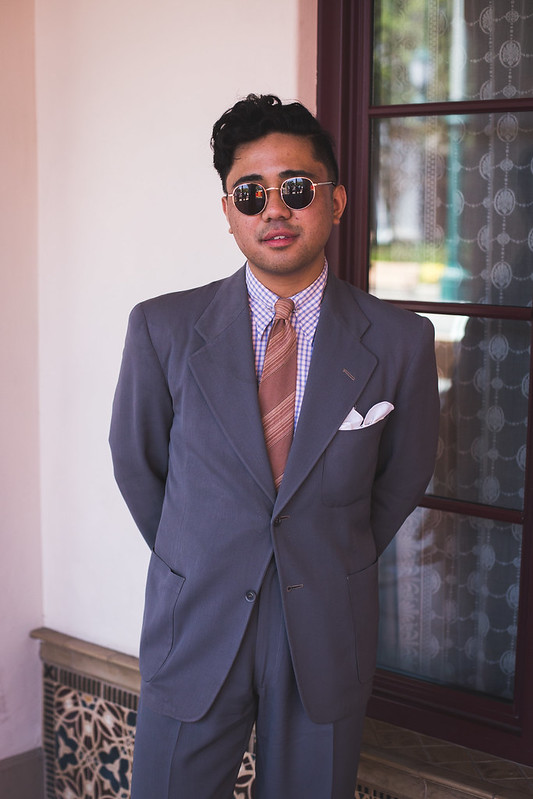
1940’s Gabardine suit. Really lovely sharp lapels with blunted edges.
Belt Backs

Ahhhh yes, the belt back. Most people have the misconception that vintage suits were baggy and ill fitting; that could not be further from the truth. Instead of mainly utilizing the side seams and darts on a jacket to create waist suppression, tailors would often employ the use of a half-belt on the back of the jacket to take in the extra fabric. In most cases, the extra fabric was then turned into pleats in order to allow for more movement without sacrificing waist suppression. It then erupted into a novelty, with brands advertising crazy action backs to set them apart from their competitors.
It’s important to remember that belt-backs are entirely functional. With a high armhole, no vent (for a form fitting jacket), and pleats in the back (whether in the center or near the sleeve-head, which is called a bi-swing) you are allowed great movement in the arms and body that you definitely can’t do today. This is what made them “sportcoats” since you were allowed to be active in it, though full suits would still make use of it. I distinctly remember a golf advertisement that made use of the the action back.
Unfortunately this craftsmanship went out in the mid 1940’s due to fabric rationing during WWII. It didn’t catch back on until the late 60s and early 70s, when it came back again in a small way. By then, belt backs were much more of a novelty rather than a craftsmanship and utilitarian detail, so they fell out of fashion again. Plus the 60s and 70s never really got the look right and the complex pleatings never returned. The detail is survived today only in overcoats and leather jackets. Imagine how much more comfortable guys would be in a suit if their jacket had a belt back!
I will admit that the look isn’t for everyone, since menswear in general is focused on being “clean” instead of utilitarian or even creative. Some people have said it’s ugly and ruins the clean line running down the back of a jacket, but I like it. It’s a cool, beautiful detail that makes the garment extremely interesting and very rare.
I’ve seen it done a few times today, but never in the crazy complex way that they did in the 1930s-1940s. I would love it if a suit could be made like this today, but I expect that it works best with low count, heavy, drape-y fabrics. The current predilection for superfine wools will probably not work for a belt back.

Perfection. I would kill to have this suit replicated.

Crazy pleats that are not only beautifully done but allow for movement in the arms!

A rare variation. Waist pleating without a belt.

Shark-gill pleats with a bi-swing in the bottom corner.

The bi-swing back in action. Note how the half-belt preserves the figure.

Bi-swing and waist pleats.

Reverse box pleat to allow movement when it is “opened”.

Micropleats and a center reverse box pleat.

The perfect suit: lovely lapels, and an interesting belt back.

The Basic belt back with pleatings near the half belt.

Crazy 20’s pleatings.



Pleated Fronts

Related to the belt back are pleated fronts, a short-lived detail that is even more rare. Like the belt back, it allows for more movement while preserving waist suppression; the only difference is that it is displayed on the front of the jacket. It’s a gorgeous detail that I also doubt many tailors will know how to do in the style of the 1930s-1940s.

Patch Pockets on DBs

Absolute perfection of a suit, down to the lapels, swelled edges, and pleated patch pockets.
A lot of guys today view DBs as the “formal” suit due to it’s peak lapels and “vintage nature”. As a result, they can’t really wrap their heads around having a DB with patch pockets, a detail that is “normally” reserved for casual jackets and suits. However, patch pockets have been used on DBs since the 1920s, without any correlation between formal and casual. Because I like putting my hands in my pockets , I prefer having patch pockets on everything, including DBs which are my favorite type of jacket. It’s such a cool detail that you never see anymore. The triple-patch pocket DB is even more elusive, which turns the DB into a 4×2 since you need to remove the decorative breast buttons to make room for the pocket. I think that makes the jacket even better, as it is now more easily used as an odd jacket. Fuckin’ dope.

Pleated Patch Pockets

Early 1930’s jacket.
It seems that pleats in general have been lost to time, as guys don’t like them on their trousers, belt backs are gone, and no one does pleated patch pockets anymore. Like all the other details in this article, these are a sign of attention to detail and craftsmanship. Yes, you could argue that regular patches are easier, but the fact that this tailor added pleats means they went the extra mile. Plus, it’s also functional, allowing the pocket to expand as you put your hands or wallet/keys in them.
There are a bunch of different ways you can add pleats to pockets, but I’m a big fan of inverted box pleats. Also keep in mind that because of the way the fabric and pleats are done, this is best used with heavier cloths (which are not en vogue today).




Awesome suit details with a bi-swing, and a pleated patch pocket with a flap.
Bellow Pockets

On that note, we really need to bring back bellow pockets. Also known as “envelope” or “saddle-bag” pockets, these pockets actually jut out of the jacket front, creating a 3-D effect similar to an accordion. Like a pleated patch pocket, this means that the pocket can actually hold more! The entire detail is something that I think is super cool and again is an intentional detail that not many employ in their wardrobe.
You probably don’t see it much today other than on hunting-style jackets (like on Andy Poupart) or military/safari field jackets. Such a shame because it is a fantastic detail that makes a suit pretty casual and easy to wear.
It’s best seen as Clark Gable suit of choice in his film It Happened One Night. This is one of my dream suits and I’d love to get it made in a brown or grey flannel. I think it’s a perfect choice for a sportcoat as well!

Ethan style in full effect. Note his spearpoint collar.

A 1940’s replica of Gable’s 30’s suit.

Patch pocket and bellow pocket.

Flapped bellow pockets on my dream sportcoat.

Pleated and flapped bellow pocket.

A typical bellow pocket.
The “Fish Mouth” or Lazy Peak Lapel

This specific type of peak lapel is one that screams out to me because it’s just so inherently slouchy. Like the notch lapels that we talked about earlier, some brands in the 1920s-1940s made their peak lapels with a droopy opening, making it look lazy and like fish’s mouth. Most peak lapels today are made so that the peak is pretty close to the collar piece, which can make for a sharp look. However, I definitely like these lazy peaks because they’re just a little bit different and create a different vibe than the steadfast peaks of today.
Obviously there were “normal” peak lapels back in the day!




Sharp lapel with a lazy peak.
Horizontal Peak Lapels

Adding onto that, we have the horizontal (or semi-horizontal) peak lapel. More specifically, horizontal peaks that lack a belly. Yes, rounded and full-bellied lapels did exist back in the day but like the lazy peaks, the horizontal ones seem to have been lost to time. I’ve heard a few guys on StyleForum say that they dislike the way it looks since it makes the wearer look too “square”, especially when combined with heavily padded shoulders. While I agree with that statement (I personally hate padded shoulders), I’m much more enamored with how the horizontal peaks emphasize a broad chest and create an elegant 3D shape.
You can read more about straight vs. bellied lapels by reading this article on Die, Workwear. My case for straight lapels simply stems from the same thread as above: it further emphasizes the chest and shoulders. As a round guy (at least in my head), I think that bellied lapels emphasize the round contours of the body a little too much. Or perhaps I’m overthinking it.




Perfect shape.
It’s also important to note that Tailor Caid (who is famous for his exquisite garments made in 1960’s ivy style) created a special 1930’s jacket that features horizonal peak lapels. You can hear Armoury co-founder Mark Cho talk about it on their website. See? Some subtle details can definitely make your garment look vintage or exude vintage style even if it wasn’t made back then.
Hollywood Waist/Drop Loops
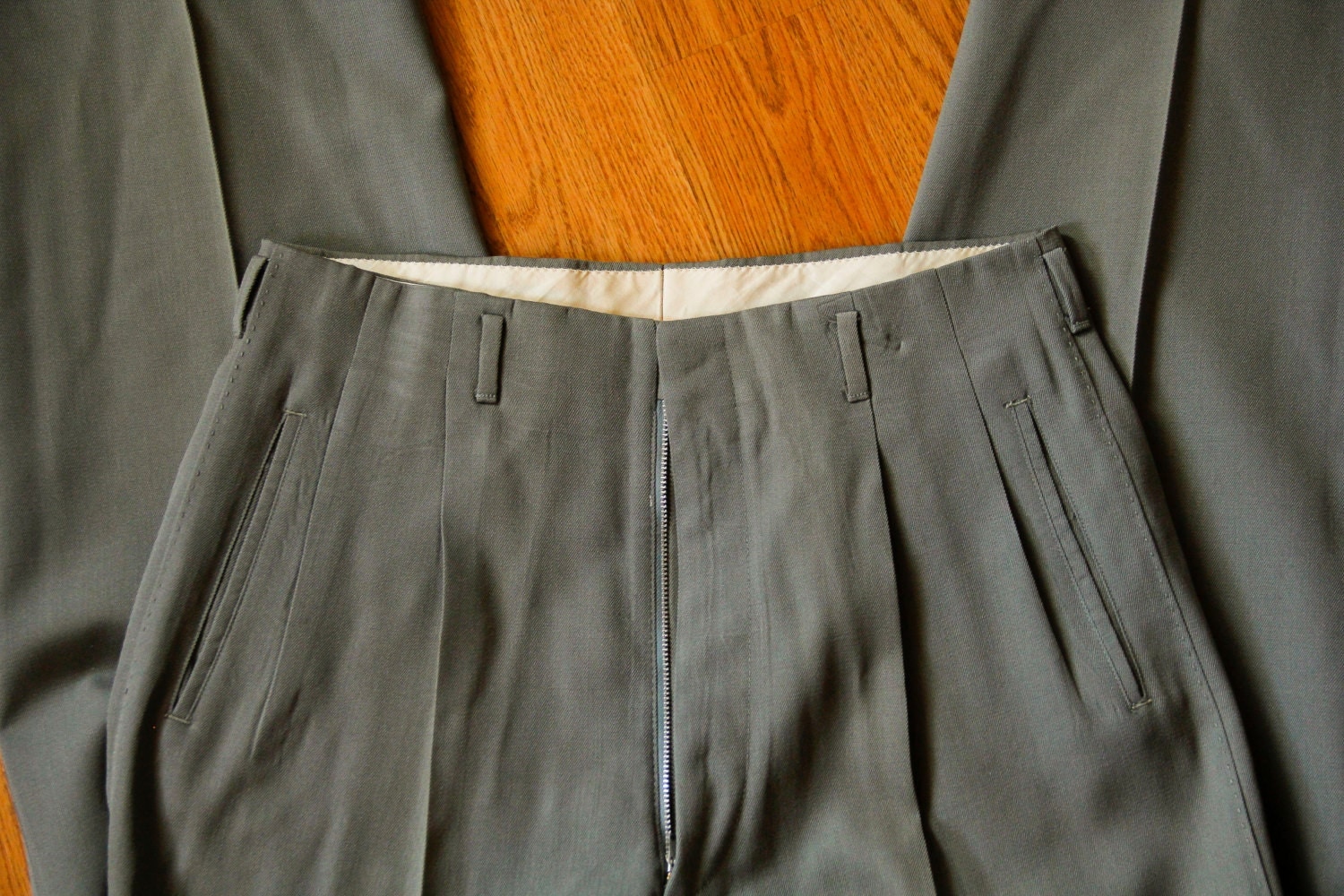
We’ve talked about this before, but I think its worth reiterating especially since Simon Crompton and Aleks Cvetkovic have started to wear the style and bring it into the contemporary menswear world.
For those of you who don’t know (or who haven’t read my article), Hollywood waist trousers are trousers that have a continuous waistband; this means that that the entire front of the pant is made from one piece of fabric. If you look at the image above, you’ll see that there isn’t a separate waistband piece. This effect elongates the leg line, which is further emphasized with “dropped loops”, where the belt loops are a fraction of an inch lower than the top of the waist band.
It was popular in the 1940s-1950s, but gradually fell out of fashion as guys returned to “normal” waistbands and loops. You definitely don’t see these anymore outside of B&Tailor, Edward Sexton, or true vintage pieces, just because it requires more work for the manufacturer/tailor and they slightly exude a zoot suit look. I really wish they came back for all trousers (or were more available) because it makes things a little more interesting in the pants department, as most trousers lack any other details besides pleats or a simple extended closure.
I especially like the way it provides a slouchy aspect to the trouser, since there is more attention to how the belt is cinched. It can be tight or loose, depending on how you want to wear it!
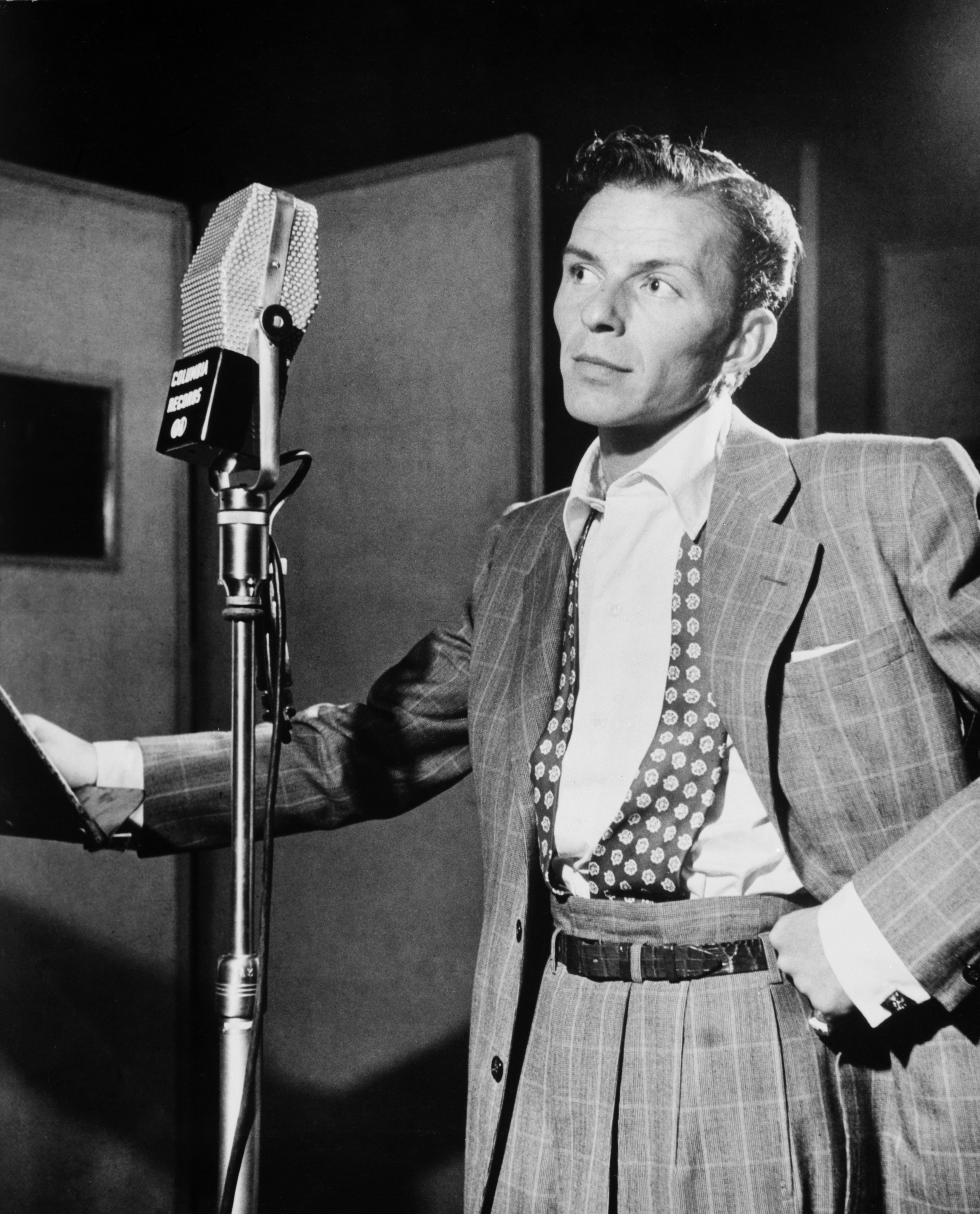


Crazy Wide “Collegiate” Waistbands

College students have been on the fore-front of fashion for a long time. Just like the jogger started to emerge amongst college guys, so did other crazy fashion-y suit styles of the 1920s-1940s. We’ve already talked about about one youth centered garment before and odd, wide waistbands were another. These pant details were all the rage during the 1920s-1930s and were even advertised as “collegiate” in order to get the young male market.
As all the other details, brands would differ on how they approached these collegiate trousers but the common detail was that the waistband was unusually wide and featured crazy buttoning, extended closure, or some combination of all of it. The crazier the better, it seemed.
Nowadways, you don’t really see this. Most waist bands are clean with many opting for hidden buttons (on the inside) rather than outside ones. The latest trend in trouser waistband is to use gurkha fastening, where the trousers have a sort of “self belt”, negating the use of side-tab adjusters or even belt loops. However, collegiate waistbands are different. They fully embrace the buttons, opt for some weird designs, and have two or even three layers of buttons to make the waistband extra large.
Obviously some of these are much too crazy to be implemented today. I definitely don’t like the bellbottom shape of the trouser. But if we focus on the waistband itself, you could say I’m enamored with it. They would certainly make your trousers look different (and be more interesting when worn on their own). As far as I know, no other tailor makes trousers like this. Like the drop loops, they emphasize the idea of a slim waist, drawing the visual further to the “ideal male physique” where you would have broad shoulders, a slim waist, and muscular/slim legs. Just look and how the illustrations to it.


I would wear any of these trouser waistbands. They’re so fucking cool.




Wide-Set Button Placement on DBs

Menswear has always had a love affair with the 1950’s-1970’s perhaps due to it’s “normal” vibes. I mean it’s easier for guys to wrap their heads around Cary Grant in the late 1950′s (my internet-friend James Jonathan Turner does this well) than to dress like Jimmy Stewart in the 1930’s. This obsession definitely is reflected in the way suits are cut and designed. Modern double breasted suits have a narrow button stance, which is definitely seen in the 1960’s and 1970’s. While it can work for slim guys, I don’t think it really works all the time. Slim lapels and narrow buttoning creates a problem of “too much chest/body”, which is an issue for bigger guys. I mean, it’s the reason I don’t really wear a bowtie unless wear a 3PC suit (which is rare).
Like my love for wide lapels, a wide buttonstance on a double breasted jacket tends to emphasize a slim waist (coupled with waist supression) and create a longer lapel line to point to the shoulders. I think it creates a pretty bold, masculine look that looks dope, especially if you have a bigger frame.




I’ll admit that this detail isn’t too far gone, but it is definitely an issue with some of the normal brands today. Indochino’s DB is pretty good but if you look at others, they’re pretty narrow. Luckily some tailors still make design jackets like the Golden Era; B&Tailor and Sartoria Dalcuore are some prime examples.
Swelled Edges
The term “swelled edge” refers to the continuous stitch (about a quarter of an inch from the edge) that goes around the lapel and patch pockets, when applicable; it differs from pick stitching in that pick stitching is segmented and doesn’t really create a true indentation like the swelled edge does. You can read G. Bruce Boyer’s info on it on Ivy Style but its basically a rakish detail that you might commonly find on ivy style jackets that were cut from more heavier country (read, casual) cloth. It definitely works better on heavier fabrics, but it was found on a lot of different vintage suits. A lot of my experience is within vintage American menswear, but I don’t think there was too much of a distinction between country and town suiting. If you scroll up, you’ll see that this detail is present in a lot of the illustrations.
Anyway, the swelled edge is a cool detail that many do not do anymore. The swelled edge apparently used to help keep the lapel’s shape during rain/moisture, and since today’s tailors emphasize superfine wools and water resistant fabric, we don’t need this detail. Additionally, men tend do hate things that aren’t “smooth and clean” (which echoes the hate against belt backs), so the swelled edge is lost. However, I think it’s a pretty cool detail that exists to make things a little more interesting. As you can probably tell, I like having a bunch of stuff on and around my jackets, and this detail is no exception
The swelled edge definitely draws attention to the lapels, which emphasizes its width at least to me. Like the lazy peak and bellow pocket, it definitely creates a 3D effect on the jacket. And like I said earlier, it looks killer with heavier fabrics.

DB with swelled edges.

1960’s jacket with swelled edges.

A 1950’s or 1960’s jacket.

1960’s suit jacket.
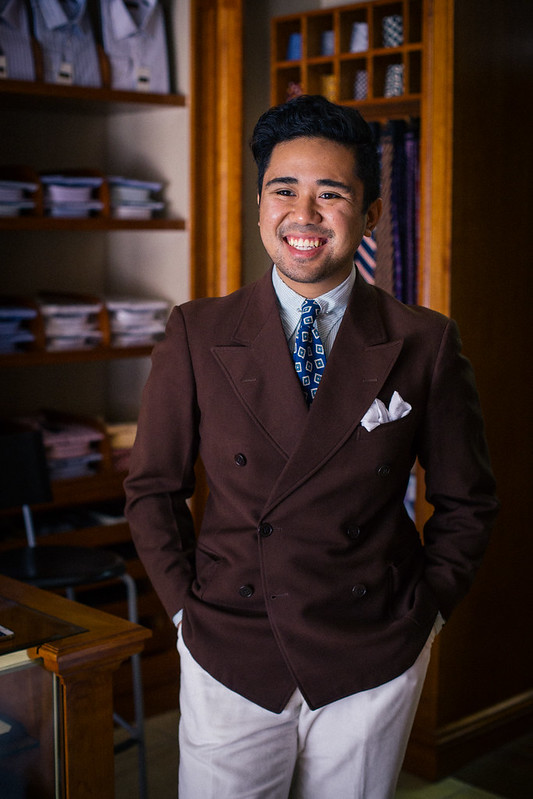
1930’s brown DB jacket.

1970’s jacket.
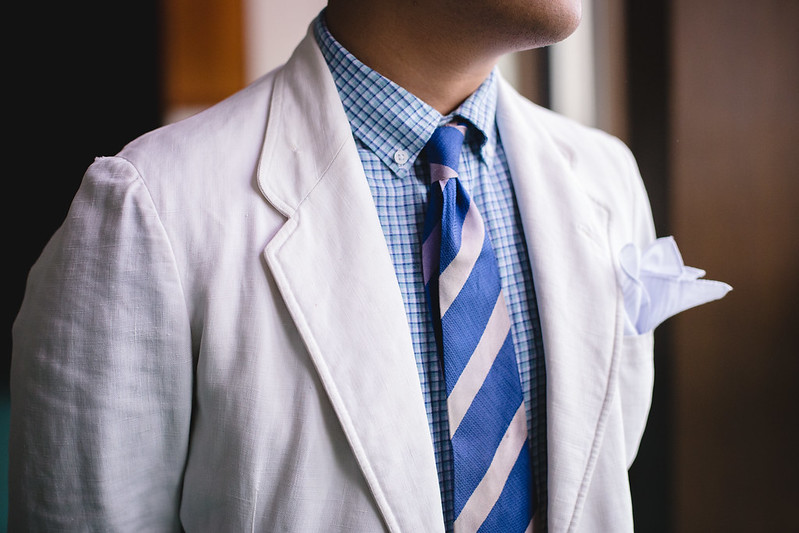
1930’s Irish Linen jacket. See, summer weight jackets can have it too!
Conclusion
Man, this really just turned into a wishlist/circle jerk over details that most guys don’t really think about. But in all honesty, these details are what drive me to collect vintage! A lot of the obsession over bespoke is usually over how a garment fits, the quality of the fabric, and more “contemporary” details like la spalla camica or how unstructured it is. Those things are still great (I love a soft jacket) , but for me and most of my friends, they pale in comparison to details like belt backs, wide lapels (in this specific shape), and pleated patch pockets, since you literally can’t find them like this anymore.
Lapels and belt backs take the cake for me as the major detail that I search for. Like I said earlier, tailors usually don’t change the shape of their lapels since they’ve been cutting them their own specific way for years; belt backs are simply out of style. As a result, I probably won’t get a bespoke garment unless I know that they can replicate these details for me. Custom clothing means getting the right fit and the details you want. I have nothing against bespoke (it’s still a beautiful, amazing process that requires the highest craftsmanship) but I personally can’t justify that investment (at least right now) on a garment that doesn’t have everything that I want. Maybe some day I’ll be able to find someone to do it!
Overall, this is why I choose vintage. It isn’t an idealized lust for the “good old days” but rather a love of specific details. I’m sure this love of obscure, old school details spans across everything: sneakers, EDM (apparently, there are a bunch of distinct genres), and even Japanese food Everyone does something differently and when you find that one thing you like, that’s the one for you.
I also want to reiterate that I have nothing against contemporary tailoring. I still love B&Tailor, Ring Jacket (by way of the Armoury), and Liverano (to name a few). Their house styles are beautiful and really exude a classic style that harkens back to the Golden era. But if all the tailoring decisions were up to me, I’d combine the lapels and belt-back action with the soft shoulders of Neapolitan jackets and finish it off with a slightly tapered hollywood-waist trouser. This really goes against most people in the vintage community who prefer heavily padded shoulders, excessive drape, and wide leg openings, since that’s the period accurate way. I personally don’t believe that you have to go all in on a particular style.
I hope you’ve enjoyed this article! I’ve been wanting to write about this for a long time and it should prove useful if you find yourselves wondering why you might like vintage or if you simply need a reference to explain to a tailor (or friend) about some crazy detail. Which ones are your favorites? Do you think you’d be able to pull off a belt back or a hollywood waist? I’d love to know what you think!
Always a pleasure,
Ethan W.
Street x Sprezza
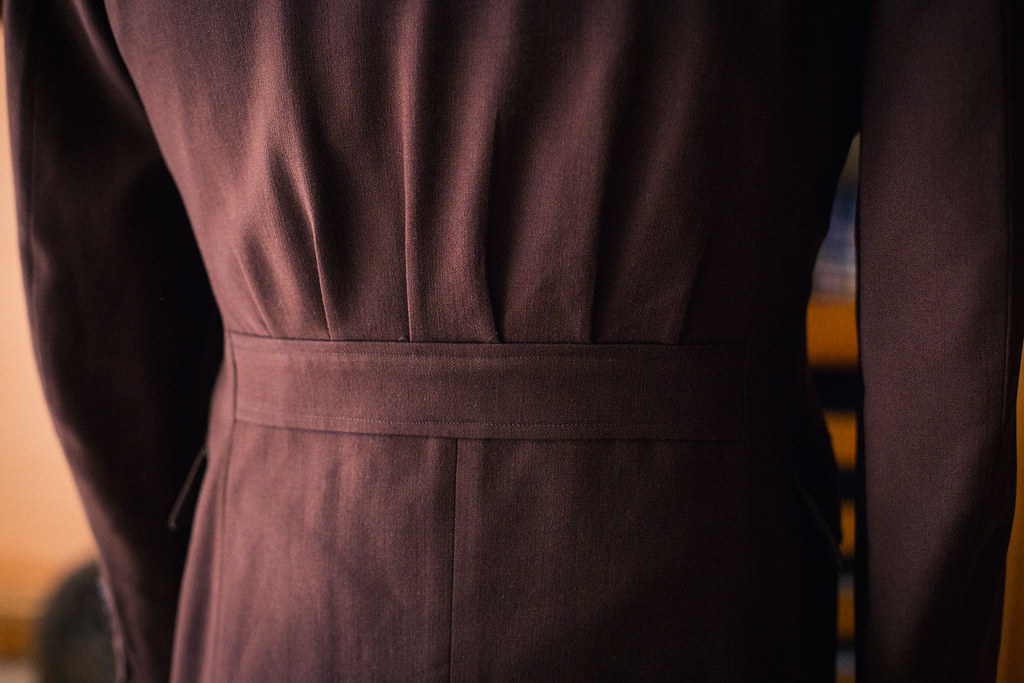
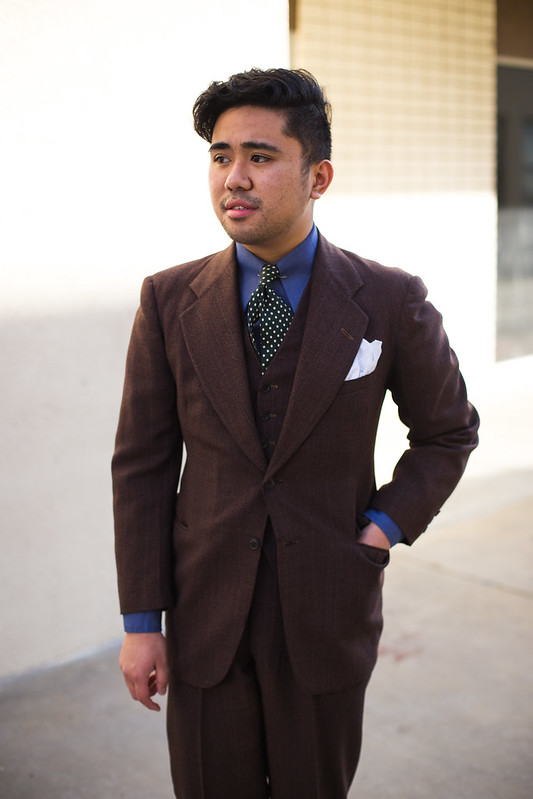

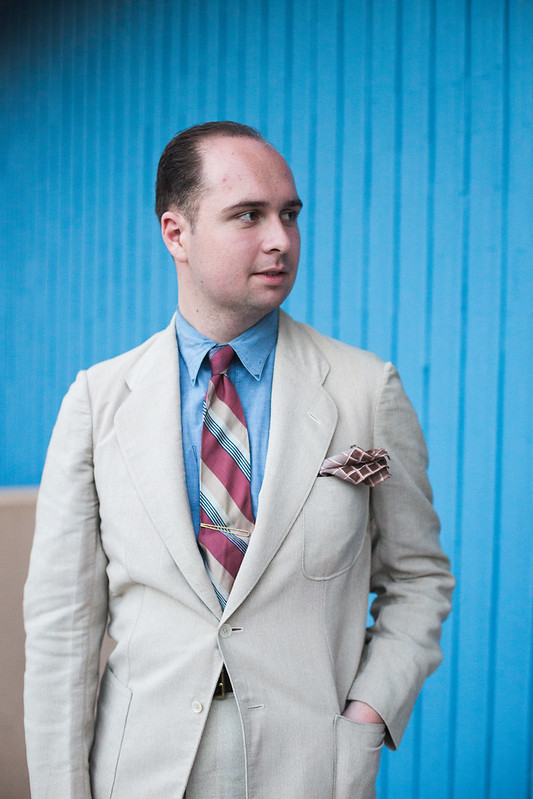



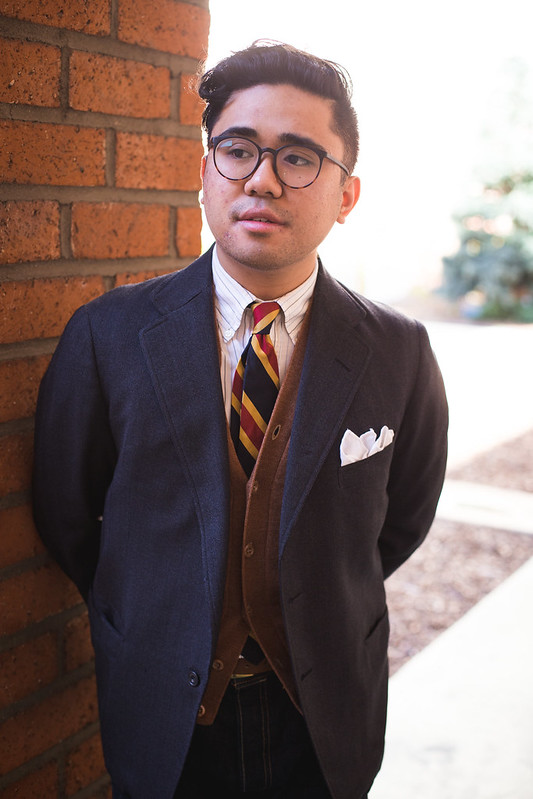
Are there any wide leg pants like from the 1930s on sale? As well as wide leg’s suit? Please, let me know.
LikeLike
Hello! You probably have to search for it on eBay, but vintage Polo Ralph Lauren pants are pretty good to approximate the look!
LikeLike
I also love the pleated / belted backs and wish we could bring them back. So practical, yet stylish in the same way as a modern pleated & belted overcoat. It would also allow the tailoring to be worn more, i.e. you’d feel the need to take off your jacket less.
I bought an overcoat without either and deeply regretted it. It looks as if it fits perfectly, yet the back is actually tight and slightly uncomfortable after a while of actual real-life test (as opposed to standing still in front of a mirror).
LikeLike
This is one of my favorite articles from you, you definitely have an eye for details and I’m going to begin looking for some of these when I thrift! Last year I picked up a vintage Pendleton sportcoat with a bi-swing back and bellow pockets, I just need to get the arms tailored and it’ll be perfect. Thank you for teaching me about the fashion I love!
LikeLike
An excellent article with info on all those little vintage details I’ve seen but never had verbiage for (clover leaf lapels!). Magnolia Clothiers makes a bunch of suits with these details but I’ve never purchased one so I can’t speak to their quality (https://www.magnoliclothiers.com/). Also, vintage Banana Republic blazers from the 80s often had belts and pleats for improved mobility. Wish they’d return. Thanks for the work.
LikeLike